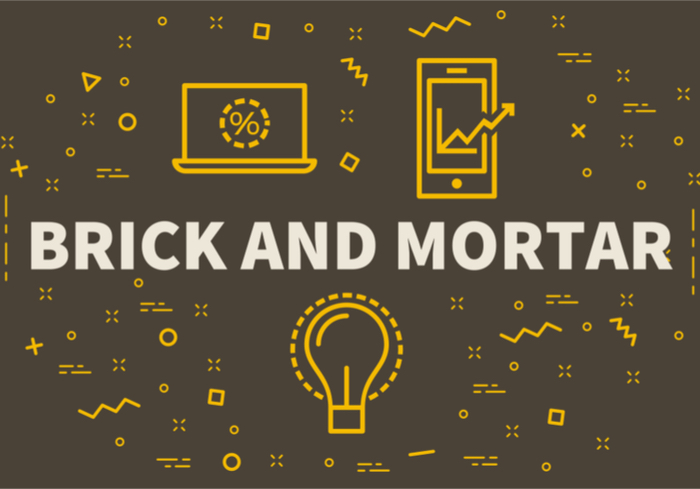
Just because a retailer was created for the internet doesn’t mean it has to stay on the internet. Digitally-native retailers, such as thredUP, are turning to brick-and-mortar stores to reach consumers, too.
thredUP, though, works a little differently from traditional retailers. It is essentially a consignment marketplace for clothes that competes with companies like Tradesy and The RealReal.
To stock its site, thredUP sends bags to sellers to fill with excess clothes from their closets. Once the sellers return the bags with clothes, thredUP decides which of the clothes it will sell, then pays the sellers when any of their items have sold.
But this business model can translate to brick-and-mortar retail. And thredUP’s CEO James Reinhart sees offline sales as an important part of its business.
“When we look at our piece of the retail pie — the percentage of retail that will be driven by resale — we think about how we can be an even bigger part of people’s lives,” Reinhart told Gloss.co. “That’s when you really start to see just how important the physical-retail piece is in the overall ecosystem. It’s about making it at as seamless as possible for everyone.”
As a result, thredUP expands to grow its brick-and-mortar presence from two stores to 10 stores by the end of 2018. And, in the future, Reinhart wants to grow the company to more than 100 stores.
For thredUP’s brick-and-mortar stores, the inventory is designed to match regional tastes and, when shoppers visit fitting rooms, they can turn to an iPad for recommendations. The shopper simply scans an item on the iPad, which, in turn, displays similar styles on thredUP’s website.
On the seller end, thredUP can pick up new inventory by allowing consumers to drop off their clothes at its brick-and-mortar locations. In the future, thredUP may partner with third-party locations to allow sellers to drop off their clothes in other venues such as, say, the dry cleaner.
A Brick-And-Mortar Vision
The news comes as Warby Parker is expanding its brick-and-mortar portfolio to help gain exposure and customer insights. The eyeglass retailer is aiming to have approximately 100 stores in the U.S. by the end of 2018, CNBC reported.
Warby Parker currently has 64 stores in markets that the retailer carefully chose. The company has also experimented with pop-up stores, mobile stores and other mediums. And it doesn’t think that retailers have to commit to only selling online or only selling through brick-and-mortar stores.
Warby Parker CEO, Neil Blumenthal, told CNBC, “We think the presentation by retail experts of ‘either [online] or [offline]’ is a false choice. It really is the intersection of the two. … And we are trying to approach retail expansion in a very deliberate manner, where we are testing and learning.”
After Warby Parker was founded online in 2010, the retailer pioneered the strategy of eCommerce retailers by opening brick-and-mortar stores. In 2013, it opened the doors of its first retail store in New York to meet customer demand for a place to try on their glasses. In the future, Blumenthal said the company could have 800 to 1,000 physical stores.
Beyond Warby Parker, Adore Me plans to open brick-and-mortar stores in the U.S. The lingerie retailer wants to open 200 to 300 locations over the next five years to compete with Victoria’s Secret’s 1,200 brick-and-mortar stores, The Wall Street Journal (WSJ) reported.
“We don’t believe 1,200 is an appropriate number of stores, but there is room for 200 to 300 stores in the U.S.,” Adore Me Founder and CEO, Morgan Hermand-Waiche, told WSJ.
This year, the Adore Me brand plans to build between seven and 10 stores. New York City will be home to the company’s first brick-and-mortar location, which is scheduled to open in the next couple of months. Beyond New York City, Adore Me plans to introduce another 20 stores next year to experiment with foot traffic, then move faster with future store openings.
Pop-Up Shops
After starting out and operating as an online-only brand, sustainable-apparel clothing brand Everlane branched out and opened up two physical retail destinations. One is a flagship store in its headquarters city of San Francisco and another is a store in the middle of New York City.
According to reports from retail news source Chain Store Age, this is not Everlane’s first brick-and-mortar flirtation. The brand has already run a series of pop-up shops in New York City and opened a showroom in San Francisco.
Since its 2010 founding, the brand’s appeal as a direct-to-consumer outfit has been its sustainable apparel and “radical transparency” regarding the items it sells to consumers. Beyond posting a price, Everlane discloses how much it costs to create each piece of clothing they sell, down to the materials, labor, duties and transport costs associated with the items.
While not all retailers may be willing or able to share this information, other retailers could follow Everlane – and Adore Me and Warby Parker – in expanding their footprint to brick-and-mortar stores.